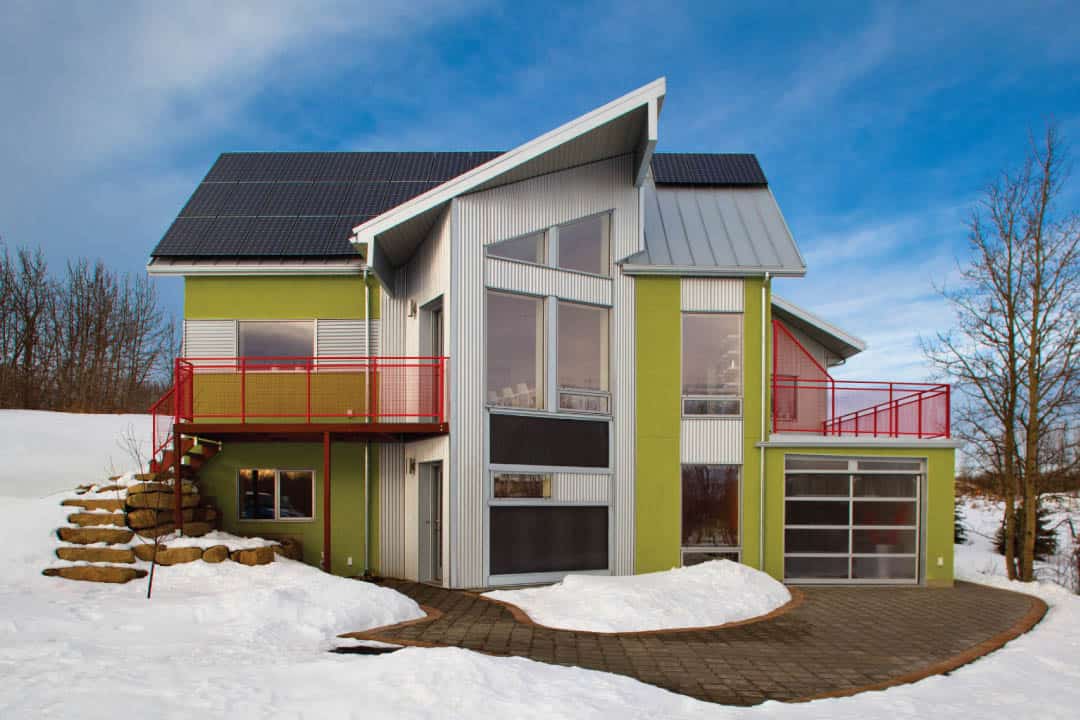Zero energy proves a smart strategy for the future of building for both the builder and the user.
The rise of extreme weather events, destructive wildfires, and the immediate need for climate adaptation solutions make the construction of zero energy buildings all the more attractive. Zero energy is a framework for designing and building durable structures that significantly reduce carbon emissions while also costing less to operate.
Ultra-smart, high-performance residential buildings are increasingly using technologies that provide resiliency benefits both for the building itself—to keep critical electric systems operational during an outage or natural disaster—as well as integrating applications that can improve the electrical grid. That’s important because it’s how we will ultimately decarbonize legacy utility fuel sources like coal-fired power plants and natural gas turbines. There’s also the added benefit of stability, as distributed renewable energy can make grid operations more efficient and reliable.
And, smart buildings are getting even smarter. Regenerative buildings that produce all of their own energy at the point of use can be designed for the power grid of the future, with technologies like smart energy storage, advanced metering infrastructure, and demand response capabilities.
Community Power
Scaling residential buildings that have maximized their energy efficiency, renewable energy generation, and integrated grid-responsive technologies help demonstrate the regenerative power within our communities.
How can renewably powered homes have a regenerative impact on the grid? The answer is two-fold: through innovative social programs and with their potential to scale. Buildings that incorporate dispatchable energy storage systems and demand response technologies can help shave-off peak demand periods on the grid, while also providing power quality and voltage regulation benefits.
In the city of Richmond, California, an Advanced Energy Community is planned to retrofit a total of 100 homes—many of them formerly abandoned—to operate at zero energy, with battery storage and demand response technologies. These soon-to-be smart homes are getting a new life from a forward-thinking Social Impact Bond administered by the Richmond City Council. But Richmond didn’t stop there: regenerative buildings must be affordable in order to scale, so each zero energy home will be available to working families via the First-Time Home Buyers’ Program. Equitable access to the benefits of regenerative, renewably powered buildings is arguably the most important part of this conversation; affordability means replicability in the clean energy economy and long-term stability for families and communities.
Meanwhile, the Honda Smart Home in Davis, California—an all-electric, Zero Energy Certified project that incorporates DC-direct electric vehicle charging infrastructure to maximize the efficiency of solar power as it is used for car charging, as well as adaptive circadian lighting technologies and ultra-efficient heat pumps for all heating and cooling needs—offers the ability for hands-on experience for its occupants. Using passive design techniques fine-tuned for the local climate zone, the Honda Smart Home models both the cost-effective, highly replicable energy efficiency strategies and active technology applications that are seen as best practices for zero energy performance.
This project’s integrated home energy management system pulls data from monitoring devices throughout the building to engage occupants in their energy use and production, operating on a building-level DC-microgrid. While this system may not ultimately be replicable from an affordability standpoint, the idea of effective occupant engagement and education about the impacts of their energy behaviors is a core part of zero energy performance.
The Human Element
A semi-simple monitoring application on a smartphone that draws data from sensors on a home’s solar array and primary electric service can be helpful for occupants seeking to achieve zero energy performance. Some home buyers like to check their bank account balance every day to get a sense of how they are spending money within a given month, and there is little difference when comparing the use of an energy dashboard for the task of staying within an energy budget.
The human element is a critical part of zero energy performance and regenerative design. Much like how a tree’s canopy uses sunlight to power its growth and a network of roots to send signals for survival, high-performance buildings can generate the energy they need to operate with an integrated grid to equitably share the benefits of resilient, clean power.
Many new residential project developments are designing for resilience, emphasizing the installation of new microgrids powered by renewables and hardened with storage and advanced controls. Our homes, businesses, and communal spaces now have new tools to deal with extreme weather events and natural disasters, and there is no time to waste.
This story appears as it was originally published on our sister site, www.hiveforhousing.com.



